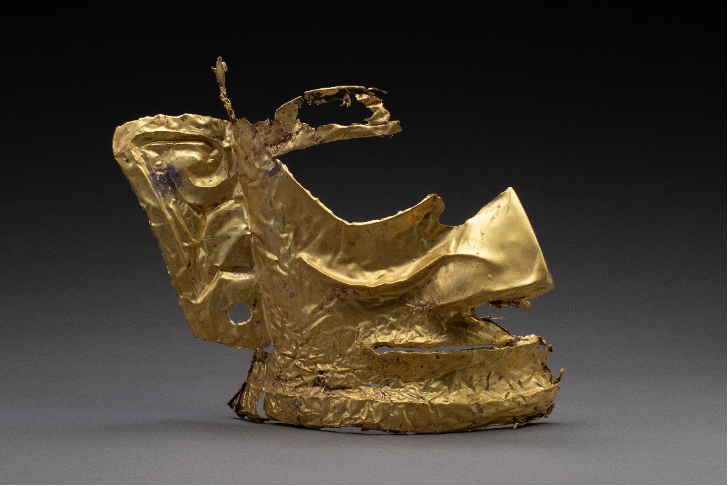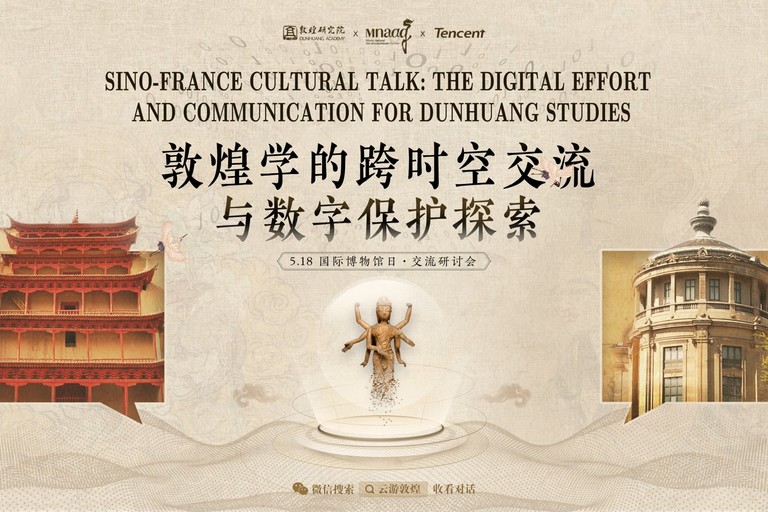Tencent Technology Innovates Archaeology and Cultural Relics Protection Efforts at China’s Sanxingdui

A golden mask unearthed in the No. 5 sacrificial pit at the ruins. (Photo credit: SCHA)
Under the cooperation, Tencent will assist archaeological researchers to perform digital archaeology and multi-dimensional digital research on the Sanxingdui site using new-generation digital technologies, such as Artificial Intelligence (AI), big data, cloud computing, and knowledge graphs. A digital archive will be established to store Sanxingdui’s archaeological data, contributing to promoting the digital interpretation and conversion of the archaeological research achievements, and diversifying the public’s approach to experiencing the site.
Sanxingdui is located on the banks of the Yazi River in Southwest China, and its history dates back more than 3,000 years. First discovered in 1929, it wasn’t until the 1980s that the significance of the site became more apparent.
The digital solutions used in the archaeological excavation of the Sanxingdui site suggests a new model for the future development of archaeology. The applications will be essential in the two organizations’ long-term efforts in archaeological excavation and research with the new-generation digital technology.

Relics unearthed in the No. 8 sacrificial pit at the ruins. (Photo credit: Zhao Hao, an associate professor at the School of Archaeology and Museology of Peking University, project lead for the No.8 sacrificial pit.)
Repairing a large number of unearthed relics that are damaged has always been a major task in archaeological work. The cutting-edge computer vision technology can play a key role in helping the restoration of unearthed relic fragments and the digital reconstruction of their original forms, according to Zhang Zhengyou, chief scientist of Tencent and director of Tencent AI Lab.
Also, by establishing a database for relic fragments via 3D scanning, the possibility of repairing can be calculated using information such as color, texture, and shape of the section of utensils via AI. This enhances the efficiency significantly.
Moreover, the computer vision technology is also anticipated in the classified study of relics and the comparative study of objects unearthed from various sites. Relics similar in shape, structure, and local texture can be efficiently identified through computer vision technology.
What is more, if archaeological data can be labeled with information such as age or cultural property in a large quantity, which will be a typical pattern recognition problem for AI, contributing to the archaeological and cultural research via rapid comparison.
Tencent has been devoted to the digitalization of culture for many years. The company has assisted the development of digitization for the Forbidden City, one of the world’s largest palaces, the most visited museum in China.
The company also helped set up a virtual tour for Dunhuang, a trading crossroads between East and West on the ancient Silk Road, and was involved in the conservation efforts of the Great Wall.
Since the establishment of Tencent's Sustainable Social Value Organization last year, a digital culture laboratory was set up to promote the sustainable protection, inheritance and innovative development of cultural heritage. Tencent will leverage its tech ecosystem, experience, and strengths for further cooperation with the SCHA.




